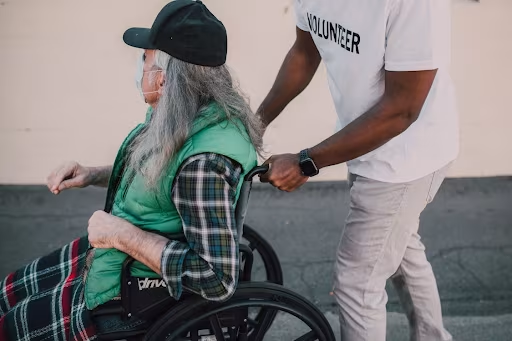Most companies have figured out that offering dental and gym memberships won’t cut it anymore. Today’s workforce is juggling more than just work deadlines—they’re managing households, side hustles, and in many cases, aging parents. Yet while childcare support gets a fair share of HR attention, eldercare is still flying under the radar.
That’s a miss—and a costly one. According to Life Assure, the need for eldercare support is growing fast, and working adults are feeling the strain. Including resources like remote monitoring systems and medical alert devices in your benefits package isn’t just generous—it’s practical. It gives employees real peace of mind, which translates to fewer distractions, better focus, and longer retention.
The Reality of the Sandwich Generation
A growing segment of the workforce falls into what’s known as the "sandwich generation"—people who are caring for both kids and aging parents at the same time. It’s a lot. From handling medical appointments to managing medication schedules and late-night emergency calls, the pressure is relentless.
This is more than just a personal challenge. It’s a workplace one. When employees are burnt out before they even start their day, productivity drops. Absenteeism goes up. Turnover becomes more likely. And the worst part? Many don’t feel comfortable talking about it because eldercare doesn’t get the same open discussion as other benefits.
Eldercare and Burnout: The Hidden Cost
Let’s talk numbers for a second. Studies show that employees with caregiving responsibilities are more likely to report stress-related health issues, lower morale, and difficulty meeting job expectations. And unlike parents who may have built-in workplace support for childcare, eldercare is often treated as a personal issue, not a company concern.
But it is a company concern. Imagine if one of your top managers is also handling overnight hospital visits for her mom or coordinating in-home nursing care for her father. The emotional toll adds up, and it often bleeds into job performance. Without eldercare support, burnout becomes inevitable—and burnout is expensive.
HR Strategy: What’s Missing (And Why It Matters)
Traditional HR strategies tend to lump benefits into “health,” “financial,” or “lifestyle” categories. Eldercare doesn’t always fit neatly into any of those. But maybe it’s time to stop trying to fit eldercare into a box and start creating a space for it on its own.
Here’s why it matters: good employees leave jobs that make life harder. If your HR strategy doesn't reflect the realities of your workforce, you risk losing some of your best people. The good news? Small changes make a big difference.
What Eldercare Benefits Can Look Like
You don’t need to launch a full-scale caregiving department tomorrow. Even modest additions to your benefits package can move the needle. Here are a few examples of what supportive eldercare benefits might include:
- Flexible Work Hours: Let employees adjust their schedules for doctor visits or emergencies.
- Remote Work Options: Working from home a few days a week can ease the burden of caregiving logistics.
- Access to Medical Alert Systems: Partnering with companies that offer affordable devices can help your employees keep loved ones safe even when they’re not nearby.
- Paid Leave for Caregiving: Even a few extra days per year can help reduce stress significantly.
- Eldercare Resource Portals: Offer access to vetted information, local services, or consultations with eldercare professionals.
How These Benefits Help Your Business
Supporting your team’s eldercare responsibilities isn’t just about being kind—it’s about being strategic. Here’s how it pays off:
1. Increased Employee Retention
People stay longer at jobs where they feel understood and supported. Eldercare benefits tell your employees, “We get it, and we’ve got your back.” That’s powerful.
2. Reduced Absenteeism
When employees aren’t scrambling last-minute to deal with eldercare issues, they show up more consistently—physically and mentally.
3. Better Workplace Culture
When benefits reflect real life, trust goes up. Employees feel safer bringing their whole selves to work, which boosts morale and engagement.
4. Improved Productivity
Peace of mind isn’t just a feel-good bonus. When your mind isn’t preoccupied with home emergencies, it’s free to focus on the task at hand.
The DEI Angle: Eldercare and Inclusion
Eldercare also ties directly into your company’s diversity and inclusion efforts. Caregiving responsibilities disproportionately affect women, especially women of color. By addressing eldercare in your benefits strategy, you’re also addressing equity in the workplace.
A thoughtful eldercare policy helps level the playing field, offering resources that allow all employees to contribute fully—regardless of their family responsibilities.
Starting Small: How to Introduce Eldercare Support
If eldercare hasn’t been on your HR radar before, you don’t need to panic. Start small and build from there. Here’s a step-by-step approach that won’t overwhelm your budget or your team:
Step 1: Survey Your Team
Ask employees about their caregiving responsibilities. You don’t need details—just a sense of how many people are balancing work with eldercare. This helps you design benefits that actually meet their needs.
Step 2: Add One or Two Low-Cost Benefits
Try offering informational webinars, digital resource hubs, or even a monthly support group. These cost little but signal that your company is paying attention.
Step 3: Promote the Benefit Clearly
It’s not enough to roll out eldercare perks quietly in a benefits handbook. Talk about them. Put them in your onboarding materials, highlight them during team meetings, and make sure managers are in the loop.
Step 4: Evaluate and Adjust
After a few months, check in. Are people using the benefit? What’s working? What needs tweaking? Make this a living part of your HR approach—not a one-and-done announcement.
Why It’s Time to Stop Waiting
The reality is that the need for eldercare support isn’t going away—it’s increasing. With longer lifespans and rising healthcare demands, more employees will find themselves in caregiving roles, whether they expect it or not.
Companies that fail to adapt will fall behind. The organizations that thrive will be the ones that look at their benefits and ask: “Does this reflect the life our employees are actually living?”
Photo by RDNE Stock project from Pexels
Final Thoughts: Human Resources Should Be... Human
At the end of the day, “human” is right there in human resources. That means acknowledging the full scope of what your employees are dealing with—on and off the clock.
Adding eldercare to your benefits isn’t just smart; it’s overdue. And it doesn’t need to be complicated. With a few well-placed tools and a genuine willingness to support your people, your company can lead the way.
Because helping your employees care for their parents today means they’ll be a lot more motivated to stick around tomorrow.



